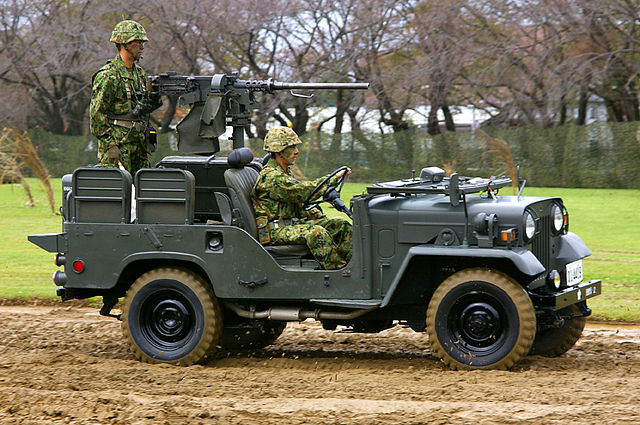Hit-and-run tactics are a tactical doctrine of using short surprise attacks, withdrawing before the enemy can respond in force, and constantly maneuvering to avoid full engagement with the enemy. The purpose is not to decisively defeat the enemy or capture territory but to weaken enemy forces over time through raids, harassment, and skirmishing and limiting risk to friendly forces. Such tactics can also expose enemy defensive weaknesses and achieve a psychological effect on the enemy's morale.
A Japan Ground Self-Defense Force military light truck armed with a heavy machine gun for anti-personnel harassment operations.
Jeb Stuart's cavalry performed a series of raids around George McClellan's army in the Seven Days Battles by using hit-and-run tactics.
Raiding, also known as depredation, is a military tactic or operational warfare "smash and grab" mission which has a specific purpose. Raiders do not capture and hold a location, but quickly retreat to a previous defended position before enemy forces can respond in a coordinated manner or formulate a counter-attack. Raiders must travel swiftly and are generally too lightly equipped and supported to be able to hold ground. A raiding group may consist of combatants specially trained in this tactic, such as commandos, or as a special mission assigned to any regular troops. Raids are often a standard tactic in irregular warfare, employed by warriors, guerrilla fighters or other irregular military forces. Some raids are large, for example the Sullivan Expedition.
British commandos watch as an ammunition dump burns during Operation Archery, Vågsøy 27 December 1941.



